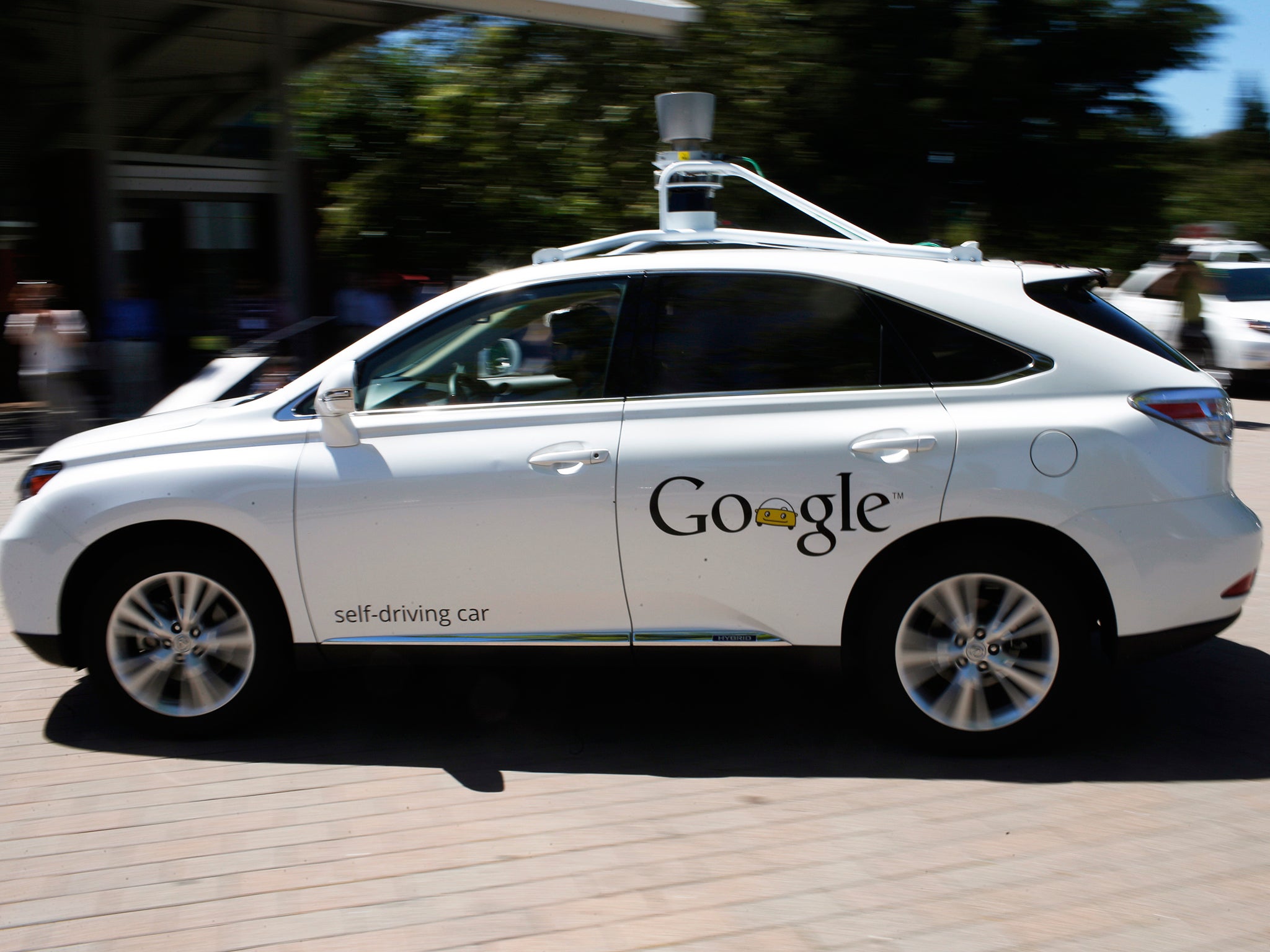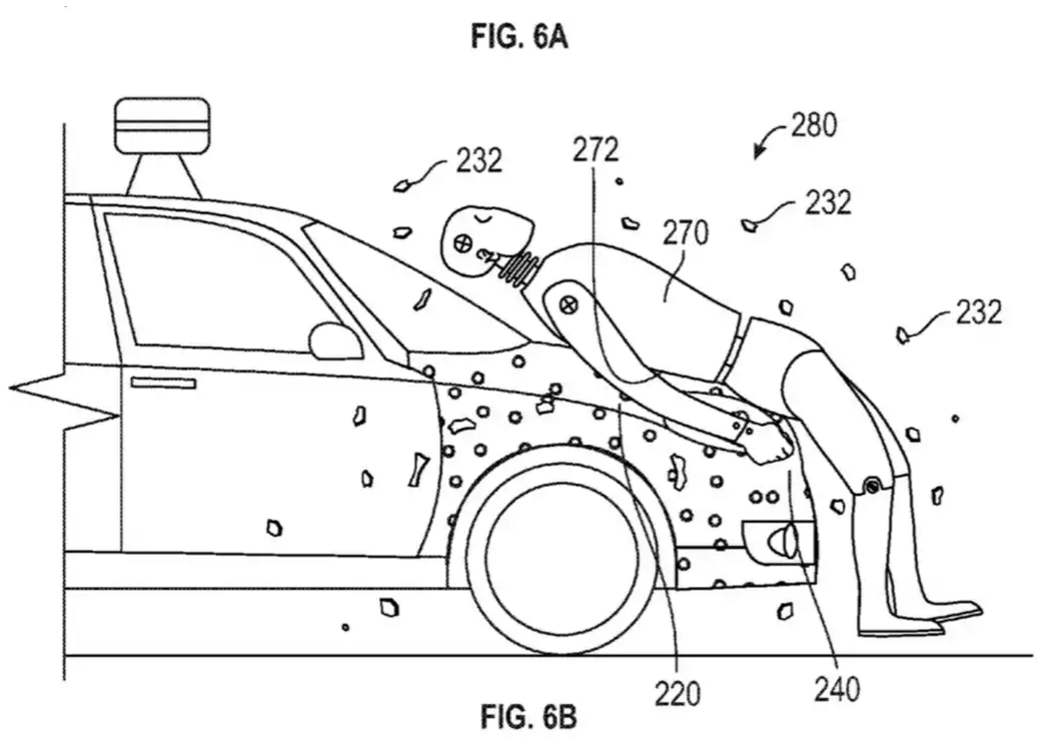Google self-driving car patents show plans for ‘sticky’ vehicles that will pick up pedestrians they crash into
‘Ideally, the adhesive coating on the front portion of the vehicle may be activated on contact and will be able to adhere to the pedestrian nearly instantaneously,’ the patent says

Your support helps us to tell the story
From reproductive rights to climate change to Big Tech, The Independent is on the ground when the story is developing. Whether it's investigating the financials of Elon Musk's pro-Trump PAC or producing our latest documentary, 'The A Word', which shines a light on the American women fighting for reproductive rights, we know how important it is to parse out the facts from the messaging.
At such a critical moment in US history, we need reporters on the ground. Your donation allows us to keep sending journalists to speak to both sides of the story.
The Independent is trusted by Americans across the entire political spectrum. And unlike many other quality news outlets, we choose not to lock Americans out of our reporting and analysis with paywalls. We believe quality journalism should be available to everyone, paid for by those who can afford it.
Your support makes all the difference.Google is working on sticky bonnets that will be able to pick up anyone they crash into.
The company has been granted a patent for a glue-type layer that would be added to the front end of vehicles, whether self-driving or not. If they happened to run into someone who was walking along, the adhesive layer would pick them up rather than having them bounce off.
“Ideally, the adhesive coating on the front portion of the vehicle may be activated on contact and will be able to adhere to the pedestrian nearly instantaneously,” the patent reads.

“This instantaneous or nearly-instantaneous action may help to constrain the movement of the pedestrian, who may be carried on the front end of the vehicle until the driver of the vehicle (or the vehicle itself in the case of an autonomous vehicle) reacts to the incident and applies the brakes.
“As such both the vehicle and pedestrian may come to a more gradual stop than if the pedestrian bounces off the vehicle.”
Google has been working on self-driving cars – and arguing about their safety – for years. The patent says that it has been created for that work but could work on cars with human drivers too.
The patent points out that work has already been donate ensure that bonnets are built to minimise the damage that a collision with a passenger can do. But it also points out that those technologies do little to mitigate “the secondary impact” – what happens when a person is thrown off the car when it comes to a stop.
Join our commenting forum
Join thought-provoking conversations, follow other Independent readers and see their replies
Comments